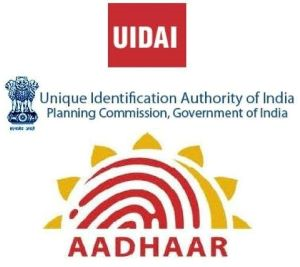UIDAI Full Form | What is Unique Identification Authority of India
What is the full form of UIDAI
UIDAI: Unique Identification Authority of India
UIDAI stands for Unique Identification Authority of India. It is a statutory authority or an agency of the Govt. of India that deals with the implementation of the AADHAAR scheme, which is introduced to provide a unique identification number to all residents of India to eliminate duplicate and fake identities. It is headquartered in New Delhi and has eight Regional Offices (ROs) in other cities of the country. Furthermore, it has two Data Centers; one at Hebbal in Bengaluru, Karnataka, and another at Manesar in Gurugram, Haryana. As of July 2019, Ajay Bhushan Pandey is the CEO of UIDAI.

It is established under the provisions of the Aadhaar Act 2016 by the Govt. of India in 2009, under the Ministry of Electronics and Information Technology (MeitY). It functions as a part of the Planning Commission of India and is the issuing authority for Aadhar unique identification numbers (UIDs) and cards. It has been mandated by the government to develop, identify, and set up the necessary infrastructure for issuing Aadhaar cards.
It issues cards with the help of several registrar agencies composed of state-owned entities and departments as well as public sector banks and entities such as the Life Insurance Corporation of India. It works in consultation with the Registrar General of India, which is responsible for census data in India.
Core Values:
- Facilitate good governance
- Integrity
- Nation Building
- Collaborative Approach
- Continuous learning and quality improvements
- Transparent and open organization
Vision:
- To empower Indian citizens with a unique identity and a digital platform to authenticate anytime, anywhere.
- To ensure efficient, transparent delivery of subsidies, benefits, and services to residents of India by providing unique identity numbers
- To develop a system to issue Aadhar number to residents of India who have enrolled for it by submitting their biometric and demographic information
- To develop a system for Aadhar holders for updating and authenticating their digital identity
- To ensure availability, maintenance, and updating of the technology infrastructure
- To build a long term organization to carry forward the vision and values of the UIDAI
- To ensure compliance of Addhaar Act by all individual and agencies in letter and spirit.
- To make rules and strategies consistent with the Aadhaar Act, to carry out the provisions of the Aadhaar Act.
Furthermore, UIDAI is responsible for Aadhar enrolment and authentication, including operation and management of all stages of Aadhaar life cycle and to ensure the security of the identity of information and authentication records of individuals.